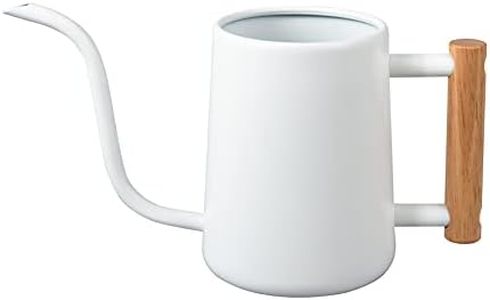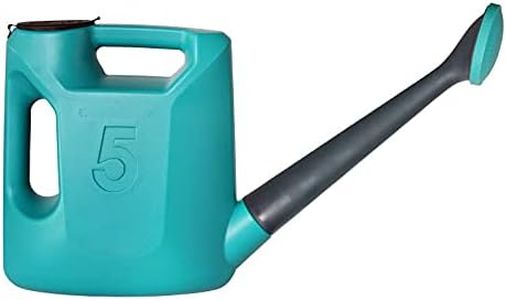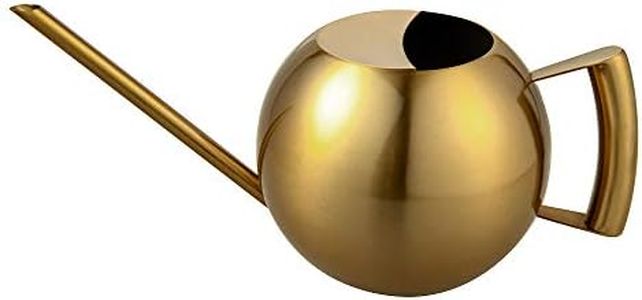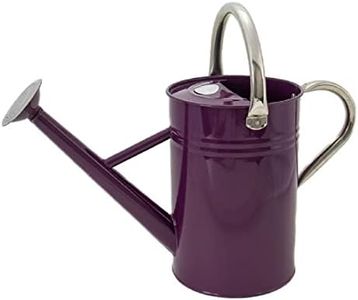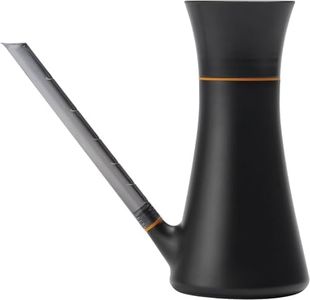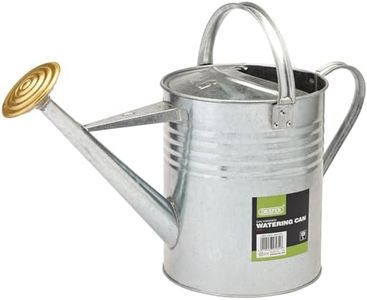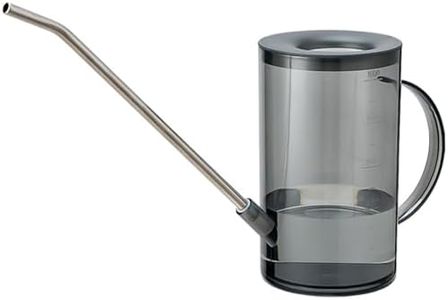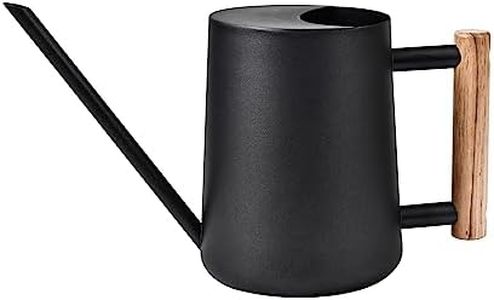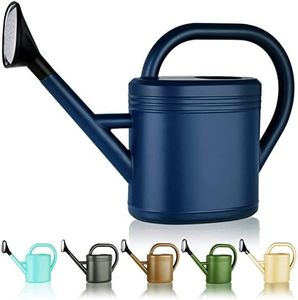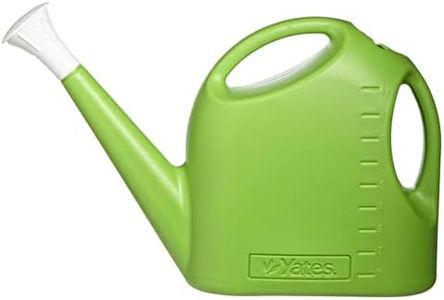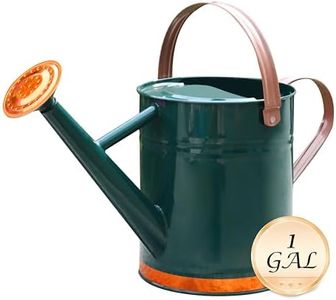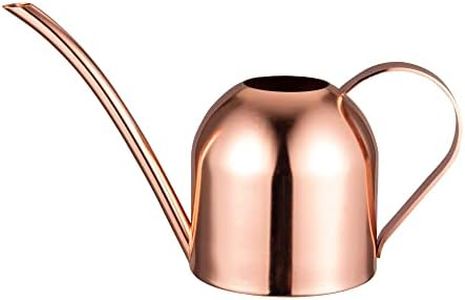We Use CookiesWe use cookies to enhance the security, performance,
functionality and for analytical and promotional activities. By continuing to browse this site you
are agreeing to our privacy policy
10 Best Watering Cans
From leading brands and best sellers available on the web.Buying Guide for the Best Watering Cans
Choosing the right watering can might seem simple, but picking one that fits your needs will make watering your plants much easier and even enjoyable. When shopping for a watering can, consider where you’ll use it—indoors, outdoors, or both—and the types of plants you have. The right features can help you water comfortably, reach all your plants, and avoid accidental spills or overwatering.CapacityCapacity refers to how much water the can holds, usually measured in liters or gallons. This is important because a larger capacity means fewer refills if you have a lot of plants, while a smaller one is lighter and easier to carry, especially for indoor use. Small cans (around 0.5–1.5 liters) are great for houseplants and delicate seedlings because they’re easy to handle. Medium cans (2–5 liters) work well for balcony gardens or small beds, and large cans (over 5 liters) are best for watering big gardens or outdoor plants. Think about how much you can comfortably lift and where you’ll be watering to pick the size that suits you.
MaterialMaterial determines the can’s weight, durability, and appearance. Common options include plastic, metal, and sometimes ceramic. Plastic cans are lightweight and usually more affordable, which makes them easy to manage indoors but they might not last as long outside in the sun. Metal cans, often made from galvanized steel, are sturdier and can last many years but tend to be heavier, especially when full. Ceramic ones are decorative but fragile and best for indoor use. Consider how much you want to carry and whether the can might stay outdoors or need to withstand bumps or drops.
Spout TypeThe spout is the part where water pours out, and its length and shape affect how water is delivered to your plants. Long, narrow spouts give you better control and help reach plants in tight spots without splashing—the right choice for indoor and potted plants. Shorter or wider spouts let out more water at once, saving time for outdoor watering but giving you less precision. Some cans have adjustable or detachable spouts to change the water flow, which adds versatility. Choose based on whether you need to reach delicate leaves or cover larger areas quickly.
Rose (Sprinkler Head)The rose is a nozzle at the spout’s end with tiny holes to sprinkle water gently, mimicking natural rain. This prevents soil from washing away and avoids damaging fragile plants. Some cans come with removable roses, allowing you to switch between fine sprinkling and a direct stream. If you have seedlings or plants that need gentle care, a rose will be helpful. For large outdoor areas, you might prefer a direct stream for faster watering, so a removable rose offers more flexibility.
Grip and Handle DesignHandles are important for comfort and control, especially when the can is full. Some cans have two handles: one across the top for carrying and another at the back for tipping. Ergonomic handles make lifting and pouring easier and reduce hand strain. If you have arthritis or limited strength, look for soft or contoured grips. Test how the handle feels in your hand and whether it helps you control the pour easily, especially if you’ll be watering hanging baskets or hard-to-reach pots.
Weight (When Filled)A full can’s weight can make a big difference in ease of use. Lightweight cans are better for kids, seniors, or anyone who struggles with lifting. The combined weight depends on both the can and its water capacity. If you only need to water a few pots, you might prefer light and easy over size, while for big gardens, you might accept the heavier weight to avoid refilling. Think about how far you’ll need to carry the can and how comfortable you feel with it when it’s full.
